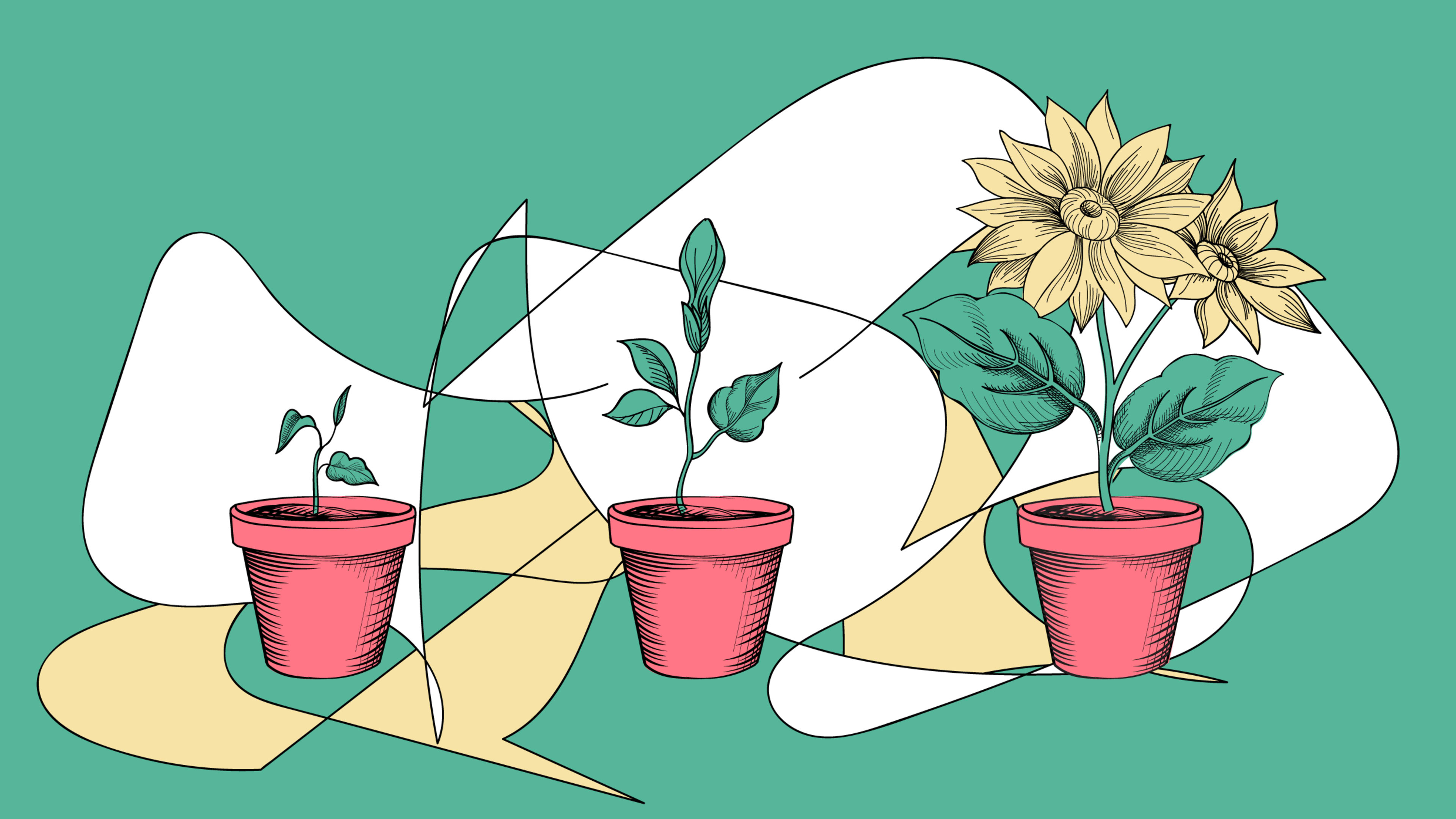Evidence in our daily lives has made it abundantly clear that the effects of climate change have arrived. For entrepreneurs who are passionate about sustainability and making a difference, creating a sustainable business can be a valuable tool for social and environmental change. More and more entrepreneurs are turning their passions into incredible businesses through disruptive technologies, sustainable products, and innovative services—and it’s only the beginning. The speed at which the industry will explode from here on out is nothing short of rapid. The global green technology and sustainability market size is set to grow from $11.2 billion in 2020 to $36.6 billion by 2025.
While this market growth is appealing from a profitability standpoint, like most founders in the space, my main purpose in creating a sustainable company wasn’t to make a quick profit. In fact, I didn’t even set out to make sustainable consumer goods at all. I actually started out in environmental architectural design, helping to build sustainable green skyscrapers. From there I was then recruited as a sustainability consultant for Discovery Communications but lo and behold, the television production sets of these shows were filled with disposable plastic. I couldn’t unsee the solution to this glaring problem so I decided to take the leap into entrepreneurship and start Repurpose, a company that offers plant-based alternatives and takes them directly to consumers.
Ten years later and I still feel like I’m trying to navigate an ever evolving industry where the bar is constantly being raised. Don’t get me wrong, I love that there has been enough of a rise in consumer awareness and adoption for standards to be increased, but the learning curve is ongoing as a business owner. So, if you’re thinking about getting into the sustainability space, firstly welcome. Second, let me share a few key lessons.
Timing is everything
When we started Repurpose 10 years ago, reusable bags, mugs and jars weren’t even part of the zeitgeist. Bringing your own cup to the local coffee shop was barely a thing, let alone remembering containers for restaurant leftovers, using beeswax instead of plastic wrap, or a packageless toothpaste tablet. It would have been a shock to learn that Unilever was getting into the refillable deodorant game—a product that doesn’t bat an eye in 2021. Sure, consumers were getting the hang of bringing reusable bags to the grocery store, but most of the zero waste conversation had been relegated to the fringes of environmental chatter.
You want to be ahead of the curve to carve out your share of the market before it gets too saturated, but being too early has its disadvantages too. If you’re a pioneer, there’s a lot of unforeseen time, energy, and budget that goes into educating your customers. We lived in a California (sustainability) bubble, where the anti-plastic movement had legs, but for the rest of the consumer world the awareness just wasn’t there. Our groundbreaking materials required heavy lifting in product education, which proved challenging as the technology behind the materials continued to evolve.
When you set out to disrupt a market, or bring innovation to a category, do your market research to determine if the mass market is ready or soon could be ready for your product. Oftentimes the consumer doesn’t even realize that the product or service could exist, so education and awareness will be critical to success, and both require a significant investment.

Consider entire systems, not single tools
Hitting the right timing in disrupting a market is critical, but also understanding how is just as important. Take fast fashion for example. The rise of fast fashion wouldn’t be possible without polyester, which is now used in about 60% of our clothes. The problem with polyester, aside from some interesting outfit choices in the 1970’s, is the fossil fuels used in production. CO2 emissions for polyester clothing are nearly three times higher than for cotton. Our reliance on polyester is one of the reasons why the fashion industry is one of the most polluting industries in the world; both in terms of its emissions-heavy production and the non-biodegradable waste it leaves behind. One piece of clothing can release 700,000 fibers in a single wash, which goes straight into our oceans.
Something needs to change, and several big companies and slow fashion lines are making inroads using different approaches. For many smaller labels, they’re disrupting the product itself by using better, more sustainable materials. This is great, but often inaccessible to the consumer from a cost perspective. Enter startups like Rent The Runway, ThredUp and Poshmark, which all implemented business models designed to disrupt the entire system of clothes buying—not just the product itself. Objectively, it’s a brilliant and effective concept that pushes people to not just shift their one-off buying habits, but how they think about clothing purchases all together.
With Repurpose, we didn’t think about disrupting the single use plastics system; we focused on disrupting the use of materials—using plants instead of petroleum for single use products. In this way, the convenience and even necessity of using disposables could continue, but with plant-based compostable products, leaving zero waste behind.
When we started, our vision was not to disrupt the entire single use/disposable model with a reusable solution. We honestly didn’t think that the consumer would adopt this new form of behavior. Our belief back then was that when it comes to sustainability in particular, shifting a behavior pattern is daunting for the consumer. We were of the mind that people wanted convenient ways to overhaul their unsustainable choices, without being inconvenienced by additional costs or new behaviors. So, we focused on improving the way disposable products were made and disposed of.
Today, the space is changing with the help of DTC technology. Companies like Cleancult, Dropps, and Blueland are re-thinking the entire business model and disrupting the way we used to think about doing laundry, dishes and household chores. This type of model will surely be the next wave of sustainable business, which involves thinking through a bigger picture that connects to innovation of materials, usage, and disposal toward a truly circular economic model.

Perfection is the enemy of sustainability
When innovating for sustainability, you have to let go of the idea that you can be perfect. It is a space where, as an entrepreneur, you feel compelled to check every single box prior to launch instead of learning and iterating as you go with your product in the market. But, it’s impossible to launch with perfection when the gold standard is a moving target. From manufacturing and impact to marketing and packaging, this is a world where you can never do enough. Technology and legislation are rapidly changing and you don’t want to be stuck with technology that can be easily replaced or restricted in five years.
With any product or industry, you can’t be everything to everyone, but the sustainable crowd has a tendency to put you under even more of a microscope. And, I don’t blame them. There are a lot of companies taking shortcuts and not walking the talk. I personally want my product to be held accountable both in quality and practices by potential customers doing the real work.
Sustainability is a long, imperfect game where you’ll get further by listening, learning, and educating, rather than lecturing and making inflated claims. You can’t be perfect, so don’t claim to be or you’ll open yourself up for some rather uninvited hole poking. In sustainability, you’re trying to take a 100 percent stance, and it’s mathematically impossible to do so on every front.
Ultimately, my biggest takeaway is that you can’t think of your product or brand as the solution. Green design and technology is a massive, complex industry and climate change is a monumental issue. You will find the most success when you can adopt the mentality and messaging points that you are not the solution, but rather one small, very essential part of it.
Lauren Gropper is the founder and CEO of Repurpse
Recognize your company's culture of innovation by applying to this year's Best Workplaces for Innovators Awards before the extended deadline, April 12.

